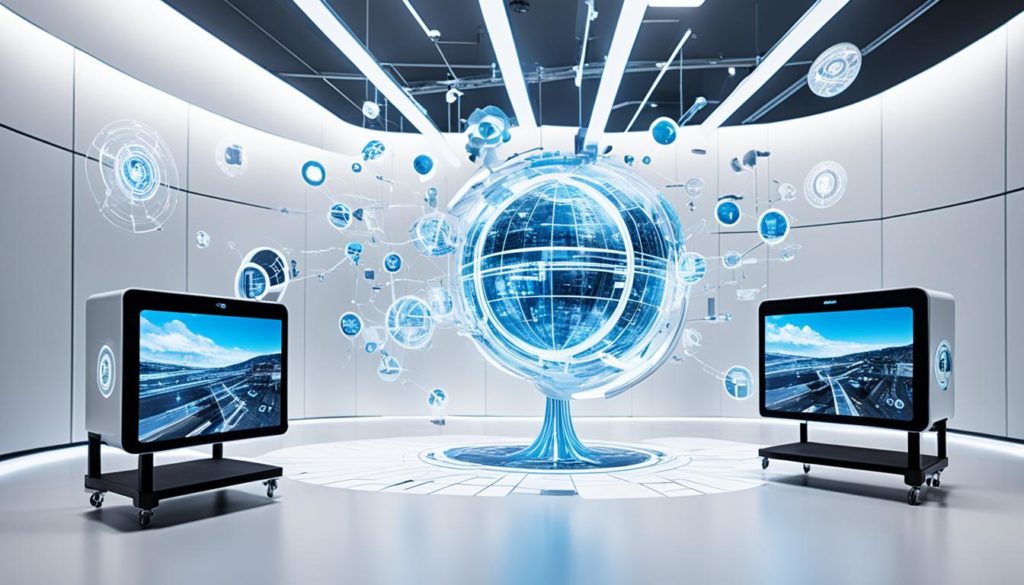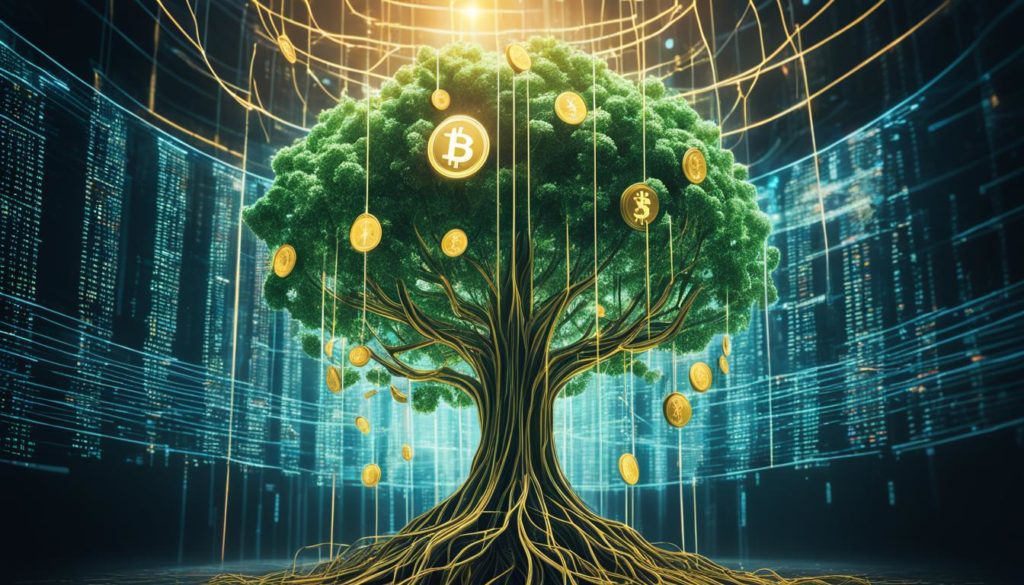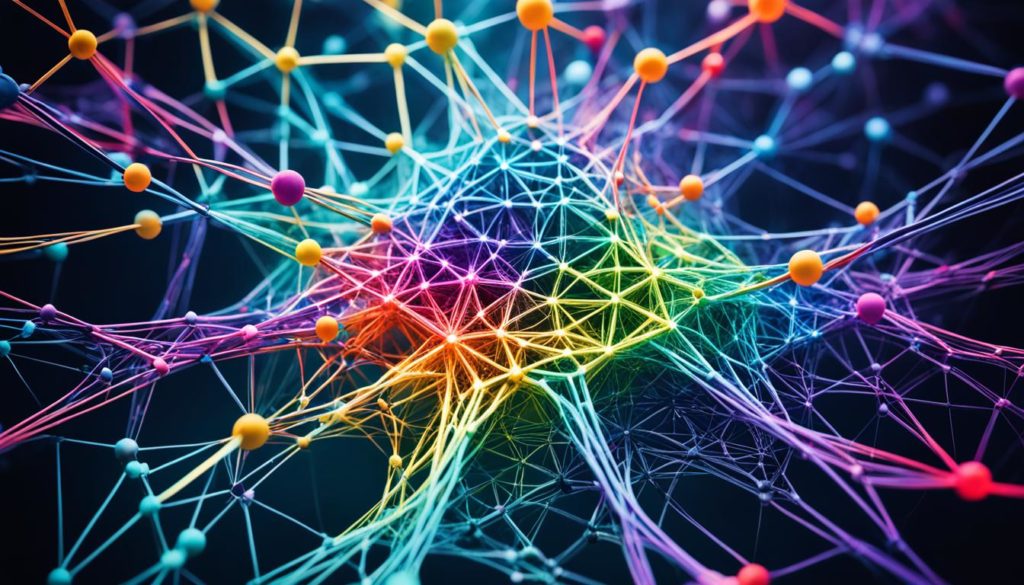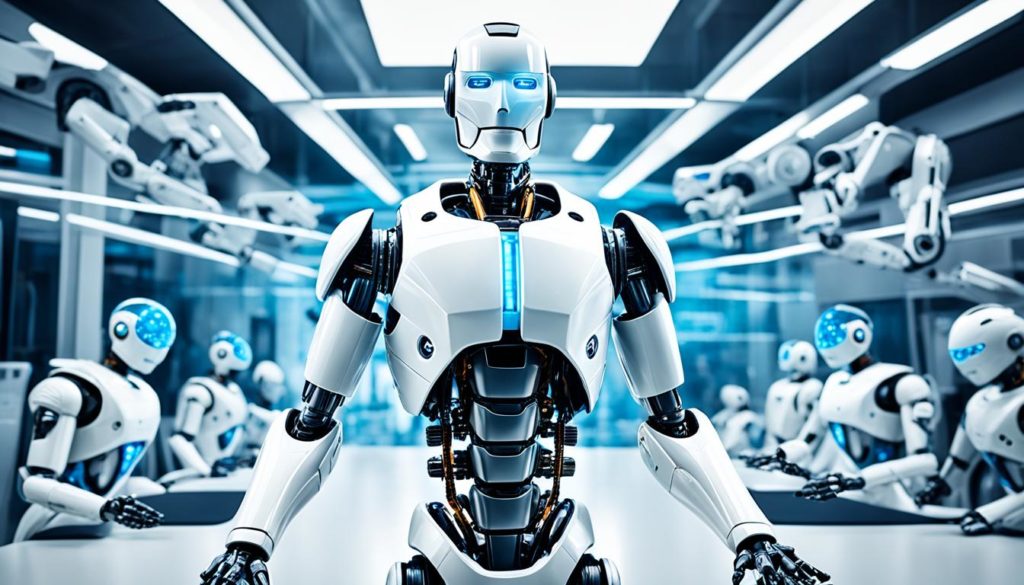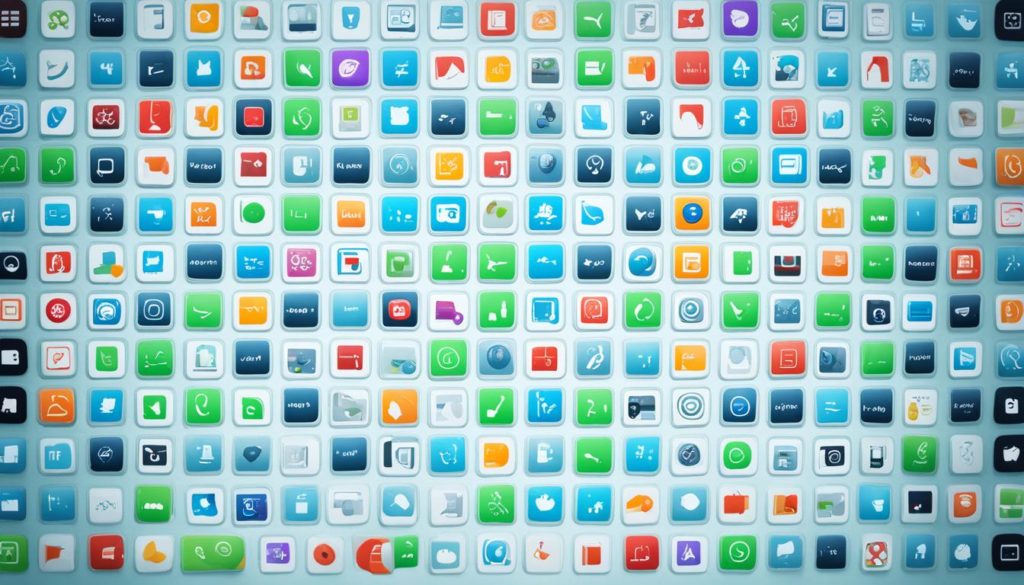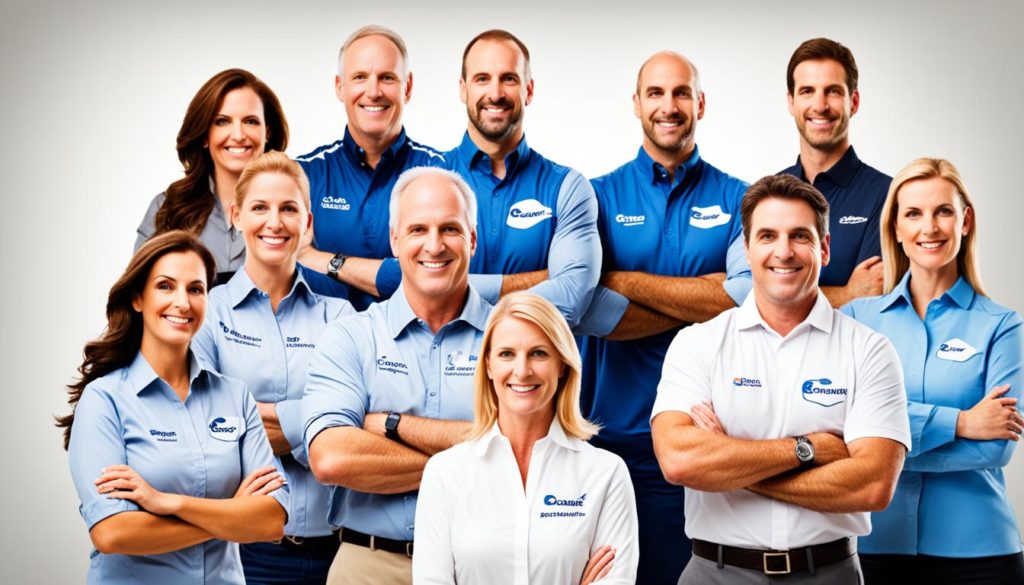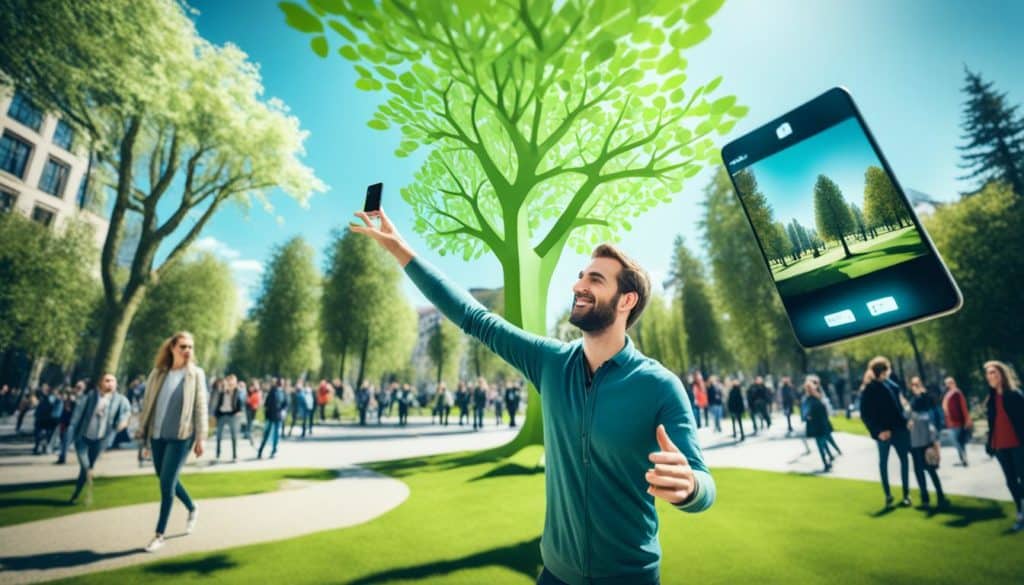
Did you know over 500 million users have tried mixed reality through AR filters on apps like Instagram? Mixed reality (MR) has become a big part of our lives. It blends the digital and real worlds together. So, it’s important to understand what is mixed reality.
Mixed reality is a big step in computing technology. It moves beyond old computers and smartphones to offer new ways to interact with the digital world. This tech uses computer vision, graphics processing, and more to make digital worlds feel real.
To make mixed reality better, we use tech like understanding the environment and spatial sound. Paul Milgram and Fumio Kishino introduced MR in 1994. Now, it includes things like mapping spaces, tracking hands, and working together in 3D. MR is changing fields like gaming, healthcare, and education, and will likely do more as tech gets better.
Key Takeaways
- Over 500 million users have interacted with mixed reality through AR filters on social media platforms like Instagram.
- Mixed reality represents the next evolutionary step in computing, beyond mainframes, PCs, and smartphones.
- Technologies underpinning mixed reality include computer vision, graphical processing, and cloud computing.
- Mixed reality provides immersive and intuitive interactions with digital content.
- Applications of mixed reality span various fields like gaming, healthcare, and education.
Understanding the Basics of Mixed Reality
Let’s explore the exciting world of mixed reality (MR). It blends our real world with digital spaces, changing how we interact with everything.
Mixed Reality Definition
Mixed reality (MR) combines the real and digital worlds. It lets us interact in ways we once only dreamed of. Paul Milgram and Fumio Kishino introduced this concept, placing it on the virtuality continuum. MR uses holographic technology to make digital and physical elements work together smoothly.
History of Mixed Reality
The story of MR started in the early ’90s with the virtuality continuum idea. Recent advances, like Windows Mixed Reality, have expanded what’s possible. These innovations let us place digital objects in our real spaces, making interactions feel natural and engaging.
Mixed Reality vs. Augmented and Virtual Reality
It’s important to know how MR differs from augmented reality (AR) and virtual reality (VR). AR adds digital info to the real world, VR takes us to a fully digital place. But MR goes deeper, letting us interact with both the digital and physical worlds at the same time. For example, AR might show a hologram of someone in front of you, while VR takes you to a new world. MR, on the other hand, lets us touch and change both the digital and real worlds, making our experiences richer in digital environments.
What is Mixed Reality
Mixed reality is a new kind of technology that mixes digital info with the real world. It lets us interact and get immersed in ways we couldn’t before with old computers. This tech combines parts of augmented reality mixed reality to make virtual interfaces that work well with our real world.
It started in the 1930s as a dream in science fiction. Now, it’s a complex system using spatial mapping, tracking hands and eyes, and understanding the environment. It’s different from virtual reality, which takes us into a full digital world. Mixed reality adds digital stuff to our real world, making it easy to interact with.
This tech uses advanced tech like sensor-driven tech and computer vision. These help computers understand the world like we do, making interactions feel natural.
Important parts of mixed reality include GPUs for 3D graphics, cloud computing for extra power, and tech that shows digital stuff. These help make complex mixed reality experiences possible on Windows 10.
- Graphical Processing Units (GPUs) for 3D graphics rendering
- Cloud computing for enhanced processing power
- Sensor-driven technology for environmental understanding
- Display technologies for visualizing digital content
Mixed reality changes how we use technology, mixing the digital and physical worlds. It opens up new ways to use tech. For more info on mixing the physical and digital, check out Microsoft’s guide.
Technological Foundations of Mixed Reality
Mixed reality (MR) has made big strides thanks to tech advances. At its heart, MR devices combine advanced parts like computer vision, graphical processing, and perception APIs. These work together to link the virtual and real worlds. They understand and react to what’s around us in real time.
Computer Vision and Graphical Processing
Computer vision lets MR devices make sense of what they see. It helps create detailed 3D models of our surroundings, making digital experiences richer. Graphical processing units (GPUs) are key for making these models look real and colorful.
For more details on mixed reality basics, check out the Interaction Design Foundation website.
Cloud Computing and Input Systems
Cloud computing has boosted what MR devices can do. It lets them handle complex tasks faster, making experiences smoother. New ways to interact, like talking, gesturing, and tracking space, have changed how we use computers.
This means we can interact with digital objects in ways we never thought possible.
Sensors and Environmental Perception
Sensors are key in MR tech. They collect data on our surroundings, helping MR devices understand where we are and what we’re doing. This info is vital for creating digital layers that fit right into our world.
Perception APIs also play a big role. They offer strong tools for analyzing the environment, making interactions smoother and more real.
Applications and Uses of Mixed Reality
Mixed reality is changing how we use technology and see the world. It’s making a big impact in gaming, healthcare, education, and engineering. Let’s look at how it’s changing these fields.
Gaming and Entertainment
Gaming and entertainment are huge for mixed reality. It brings together the real and digital worlds in games. For example, Pokemon Go shows how MR changes games, making them more interactive.
Healthcare
In healthcare, mixed reality is a big deal. It’s changing training for doctors, improving medical images, and helping with patient care. MR also lets surgeons perform remote surgeries with great accuracy.
Education and Training
Education is another area where mixed reality is making a difference. It creates learning environments that feel real. This helps students and trainees learn safely and effectively.
Engineering and Design
Engineering and design also benefit from mixed reality. It uses holographic computing to show 3D models in real spaces. This helps engineers and designers work together better and see their ideas come to life.
Mixed reality is changing many areas, from gaming to engineering. It’s making experiences more immersive and helping with complex tasks.
Conclusion
Mixed reality is changing how we interact with both the digital and physical worlds. It blends these two, opening new doors for teamwork, creativity, and fun experiences. From gaming to healthcare, mixed reality has many uses.
As technology gets better, we’ll see more tools and experiences that connect our online and offline lives. New devices and platforms will make interacting with digital worlds easier and more natural. This will lead to more holographic experiences and benefits for many industries worldwide.
Mixed reality’s impact on our lives and work is huge and will keep growing. It’s changing how we see and interact with the world. The possibilities with mixed reality are endless, and we’re just starting to see what it can do.
FAQ
What is mixed reality?
Mixed reality (MR) blends digital info with the real world. It gives users interactive and immersive experiences. Users can engage with 3D data in their space, mixing the digital and physical worlds.
How does mixed reality differ from virtual reality?
MR overlays digital content on the real world, allowing users to interact with both. VR, on the other hand, fully immerses users in a simulated world, hiding the real one.
What are some key components of mixed reality technology?
Key parts of MR tech include computer vision, graphics processing, and cloud computing. Also, advanced input systems like hand-tracking and spatial sound, and sensors for perceiving the environment. These work together for rich MR experiences.
What types of devices are used for mixed reality?
MR devices range from holographic devices like Microsoft HoloLens to immersive VR headsets. These devices use sensors and display tech for interaction between the physical and digital worlds.
What applications does mixed reality have?
MR has many uses in gaming, healthcare, education, and engineering. It makes experiences more interactive, improves training, and simplifies complex tasks in these fields.
Who first introduced the concept of mixed reality?
Paul Milgram and Fumio Kishino introduced MR in 1994. They came up with the term and the “virtuality continuum” idea. This idea places MR between fully physical and fully digital realities.
How is augmented reality related to mixed reality?
AR is a part of MR. AR adds digital info to the real world. MR, however, allows more interaction between digital and physical elements, offering a deeper experience.
What is an example of mixed reality in everyday use?
AR filters on social media like Instagram are a form of MR. They blend digital animations with real images. Microsoft’s HoloLens is another example, letting users interact with 3D objects in their space.
What advancements are driving the development of mixed reality?
Improvements in computer vision, graphics processing, sensors, and cloud computing are driving MR. These advancements help devices understand and interact with the environment better, offering more advanced MR experiences.
What potential impact could mixed reality have on future technology?
MR could change how we interact with computers, making it as natural as real-world interactions. As tech gets better, we’ll see new devices and experiences that expand MR’s reach. This will change how we work, play, learn, and collaborate across industries.
Future App Studios is an award-winning software development & outsourcing company. Our team of experts is ready to craft the solution your company needs.



